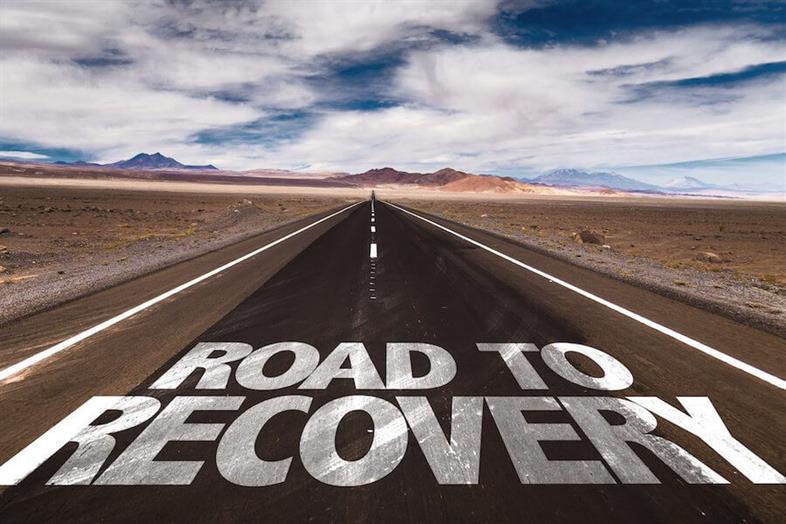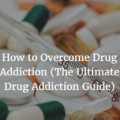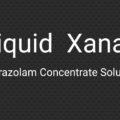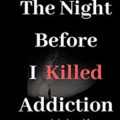What qualifies as an addiction?
Addiction is a psychological and physical inability to stop consuming a chemical, drug, activity, or substance, even though it is causing psychological and physical harm. Drug addiction is defined as a chronic, relapsing disorder characterized by compulsive drug seeking and use despite adverse consequences. It is considered a brain disorder, because it involves functional changes to brain circuits involved in reward, stress, and self-control, and those changes may last a long time after a person has stopped taking drugs.11
Addiction is a lot like other diseases, such as heart disease. Both disrupt the normal, healthy functioning of an organ in the body, both have serious harmful effects, and both are, in many cases, preventable and treatable. If left untreated, they can last a lifetime and may lead to death
What is 4-AcO-DMT?
4-AcO-DMT is a novel psychedelic drug, belonging to the tryptamine class of substances. Also known as psilacetin, O-Acetylpsilocin, 4-Acetoxy-N, and N-dimethyltryptamine, it is notable for producing various classical psychedelic effects when used. The effects are similar to those produced by DMT and psilocybin mushrooms, which are classified as entheogenic tryptamines.
If you’ve taken this drug recently, there’s a high chance you took it orally, or even via insufflation. Rarely is it injected? For a long period of time, 4-AcO-DMT was exclusively distributed via the online grey market, but in more recent times, it has been sold as ‘shroom pills’ on the streets. Typically, it takes the form of gel capsules or pressed tablets.
Withdrawal from this substance is not as deadly or dangerous as what one might experience with some other drugs. In fact, you may never have to encounter any serious withdrawal symptoms. However, that does not mean withdrawal cannot be problematic in certain cases.
What is 4-AcO-DMT Withdrawal?
Withdrawal refers to the set of symptoms experienced as your body tries to return to normal functioning after a substance to which you’ve become addicted is removed. As you build tolerance and dependence, your normal state of functioning shifts such that you cannot function normally without using the substance. Depending on the drug in question, the symptoms you experience might be more psychological than physical (or they could be entirely psychological).
In the case of 4-AcO-DMT, there are no physiological symptoms of addiction. If you’ve been using the substance for an extended period of time, you could experience ‘flashbacks’, insomnia, and depression. A flashback refers to a symptom whereby you experience the effects of a mushroom ‘trip’ days, weeks, or even years later. There are a few reasons why these psychedelic trips may surface, including sleepiness, stress, or other substances like alcohol.
It’s believed that withdrawal is not too much of a problem when dealing with this substance, because of the way it is used. It’s not likely that you would use it as often as you might other drugs. The reason for this is that while you might be able to function normally and carry out your daily activities whilst using other drugs, this can’t be achieved with 4-AcO-DMT. Subsequently, the resulting hallucinations when you take the drug can make it impossible to carry on as normal.
If you don’t use this substance too often, your chances of developing dependence or addiction are slimmer and withdrawal does not become a problem. There are exceptions of course because people use and react to drugs in different ways. It’s not impossible to experience withdrawal symptoms when you stop using psilacetin. In fact, withdrawal can be serious in some cases.
Causes of 4-AcO-DMT Withdrawal
Withdrawal from 4-AcO-DMT is nearly entirely psychological. During withdrawal, you’ll become angry or confused about actual reality as a result of prolonged exposure to hallucinations. The longer you’ve abused the drug and exposed yourself to its effects, the more intense withdrawal is likely to be.
When taken, the effects of 4-AcO-DMT are drastic and don’t tend to last very long, taking you on an intense psychedelic trip. The substance produces an incredibly powerful and dramatic experience, which can make you feel like you are communicating with alien-like creatures or entering a different world altogether. The symptoms experienced during withdrawal are a result of these initial effects of taking the drug, especially when you expose yourself to them for a prolonged period of time.
Typically, psilacetin does not produce physical withdrawal and is not regarded as an addictive substance. However, it does have the potential for addiction in certain cases and it’s possible for tolerance to develop if you continue to use it. If you do become addicted, it is probably because you increased your dosage over time. Eventually, you could become so accustomed to the fantasy world that you’ll find it difficult to re-enter reality.
Phases of 4-AcO-DMT Withdrawal
Withdrawal does not occur in many cases, but when it does, it doesn’t necessarily follow a homogenous pattern. Therefore, it can be difficult to determine a definite set of phases. There’s a good chance you won’t need a formal withdrawal management protocol, but if you have a severe hallucinogen use disorder, you could benefit from a residential treatment programme.
The advantage of getting inpatient treatment early on is that you’ll get help developing a foundation for recovery, plus you’ll be isolated from any toxic influences. Also, withdrawal tends to occur in varying phases for different people, because other drugs are often abused at the same time. If you or your loved one have developed a physical dependence on prescription medications or alcohol, a formal withdrawal management programme might be needed.
The use of other drugs in combination with O-Acetylpsilocin may be due to the effects of using this substance, which can encourage the risk-taking behaviour. Depending on the nature of the drugs used and how they were combined, withdrawal can progress in unpredictable ways.
4-AcO-DMT Withdrawal Symptoms: What to Expect
So far, no recognizable withdrawal symptoms have been documented, as there is no risk of physical dependence (with dependence being entirely psychological). If you encounter withdrawal, you’re likely to experience flashbacks. These are a psychological phenomenon, whereby you experience an episode of the substance’s subjective effects long after they have worn off. Flashbacks are not necessarily all negative, as they can incorporate positive aspects of ‘trips’ as well.
In cases where physical symptoms occur during withdrawal, this is as a result of the effects of the drug on the brain. When introduced to the body, hallucinogens affect the brain, where they stimulate neurotransmitter production. They regulate central nervous system functions and enable the different regions of the brain to communicate.
When the brain’s natural chemical balance is disrupted, it is no longer able to regulate bodily functions as it normally would. Physical withdrawal symptoms develop when the chemical imbalances in the brain reach a certain point. In some cases, episodes of seizure can even occur during withdrawal.
Other symptoms you may experience besides hallucinations include speech difficulties, frequent and extreme mood swings, violent tendencies, psychotic-like behaviour displays, and panic attacks.
Timeline of 4-AcO-DMT Withdrawal
Withdrawal from this drug may be unpleasant, manifesting symptoms such as visual and auditory hallucinations. Other unpleasant symptoms you may experience include increased heart rate and agitation. Typically, quitting does not result in physical side effects, because withdrawal is almost completely psychological.
Given that withdrawal does not have the same effects on everyone, the timeline of withdrawal may also vary from one person to the next. There are a number of unique factors that can make the length and severity of withdrawal vary. Some of these include your age, the presence and nature of any underlying psychological disorders, your overall physical health, and the presence and extent of a co-occurring addiction to other substances.
Other crucial factors that can affect the timeline of withdrawal are how often and how long you’ve been using O-Acetylpsilocin.
What is 4-AcO-DMT Detoxification?
Detoxification is a process which is intended to manage acute intoxication, whilst cleansing your system of this drug. If you’ve been abusing any other substances, detox will need to expel those as well. In severe cases of 4-AcO-DMT intoxication, inpatient detox can be highly beneficial. Even if there are no physical symptoms, you can receive adequate care to cope with the negative effects of withdrawal.
As yet, there are no medications approved to specifically treat withdrawal from this substance, but if you experience anxiety or agitation, you may be given a low dose of a benzodiazepine for its sedative effects. If you are burdened with depressive symptoms, antidepressants may be administered.
Detox is certainly crucial, but bear in mind that it is only one aspect of treatment and not the entirety of it. If you’re experiencing withdrawal or are acutely intoxicated, detox will be beneficial. However, it is not sufficient to deal with the underlying issues related to substance abuse. A formal rehabilitation programme can follow detox, which will provide comprehensive addiction treatment. There are various types of programmes available which can suit your needs.
4-AcO-DMT Detox Process
The detox process starts with intake, which allows the treatment centre to obtain information about the state of your mental and physical health, your medical history, substance use history, the extent of home and family support you have, and any other important concerns. You might also have to undergo a few tests and fill out consent forms. The information gathered during this stage will be useful in determining the most appropriate course of action.
The intake process is also a time for you to ask questions about the facility and what they have to offer. You need to know that they are the right fit for you. Once that is done, you can proceed to detox proper. Normally, it shouldn’t take too long before detox is complete, but the length of time for which you’ve used the substance and the severity of the addiction can affect the duration of your detox period.
Depending on the nature of the symptoms manifested, you could be given medications or engaged in therapy in order to manage them. Beyond detox, formal treatment for substance abuse may commence on an outpatient or inpatient basis. It’s this formal treatment that is designed to address the psychological and emotional aspects of addiction, which detox alone fails to address.
Home Detox
It is possible to detox at home, because withdrawal doesn’t always have dangerous consequences or may not even occur at all. When detoxing at home, it’s a good idea to give yourself a boost, as you allow your body to flush out the drug toxins by itself. You may want to start by consuming various high-quality nutrients and vitamins. Try to avoid all kinds of drugs, especially those not prescribed by a physician.
You can create a diet which you will follow strictly, supporting it with additional supplements. Your focus should be on eating foods loaded with nutrients that can give your body the necessary support to rid itself of toxins and allow you to return to a normal, healthy state. The best foods to eat include lean proteins, coconut and olive oils, Omega-3 oils and other healthy fats, seeds and nuts, garlic, leafy greens, citrus fruits, and vegetables.
Also important during detox is water, because you’ll need to stay hydrated. Exercise is also important, even though it may feel difficult. However, your exercise regimen doesn’t have to be anything major, as long as you engage regularly. Please note that detox at home comes at a greater risk of relapse, since you won’t have the control that is ensured in an inpatient treatment facility.
Why Detoxification at Home can be Harmful
It is true that withdrawal from 4-AcO-DMT is usually not dangerous and in many cases, doesn’t even occur at all. Though it will be safe to detox at home in many cases, there’s almost no way to tell if withdrawal will turn out badly. It becomes even trickier if you’ve been abusing the drug for a long time and taking it in large doses.
It is possible for you to experience particularly bad trips during withdrawal, especially if you’re emotionally vulnerable. Inpatient treatment is best in such cases, so you can be assured of getting the best possible care in the event that anything goes wrong. It’s always recommended to check with a doctor before beginning the process of home detox. If you must detox at home, at least have a physician who is aware of this and can check your progress.
Medically Supervised 4-AcO-DMT Withdrawal Detox
A medically supervised detox won’t be necessary for most cases of withdrawal from this substance, but in some cases, it can be useful for achieving abstinence. If you or your loved one have been chronically abusing 4-AcO-DMT for a long time, medically supervised detox could be the ideal means of becoming drug-free.
Also called ‘medical detox’, medically supervised detox takes place in the comfort and safety of a medical facility, where you will have round-the-clock access to medical personnel. Such facilities include hospitals and detox clinics. Medically supervised detox can also take place in a substance abuse treatment centre, such as an inpatient rehab.
During medical detoxification, certain medications can be applied to ease the symptoms of withdrawal. As withdrawal and detox progress, a certified medical professional will monitor and evaluate you closely. If you believe your levels of intoxication or substance dependence are high and are uncertain about whether you can safely detox on your own, it may be best to opt for medical detox in a professional setting.
Live a Drug-Free Life Again
No matter how terrible you might feel about your substance problem right now, please know that there is always the chance to live a drug-free life again. It’s true that recovery is a lifelong process and that it can be challenging to stay substance-free. However, successful rehabilitation is possible. You might find it to be a challenge, trying to adjust your mindset after addiction, but you can certainly get past that phase.
There may be times when you will feel like using hallucinogens again, but you can cope with cravings using the techniques and strategies you will be taught in rehab. Your treatment team can work with you to design a relapse prevention plan to help keep you on track once you are discharged. Usually, such a plan may include 12-step therapy, regular meetings with a therapist or counsellor, or a halfway home.
Even with the number of options available for aftercare, one of the most important factors for successfully preventing relapse is having solid family support. It helps to maintain relationships with those who you can count on for encouragement and strength. Even if you never got the chance to design a proper relapse prevention plan, you can join a local support group, as it can be a great help in making sure you adjust to living drug-free.
9 Tips On How To Help Someone Recover from 4-AcO-DMT Addiction
4-AcO-DMT addiction and recovery can be confusing. And there are right and wrong ways to support someone who is on the path toward greater wellness. Here are some things to keep in mind and some actions to take when helping someone overcome 4-AcO-DMT addiction.
1 – Be realistic
Expect that there will be roadblocks, resistance, and possibly relapse. But also expect that rehabilitation and recovery are possible with the right steps forward. Find a balanced perspective so you can stay encouraged and positive even amidst the inevitable challenges to come.
2 – Remember that they are still the person you know and care about even through the challenges
Sometimes, it can be hard to clearly that person through the veil of their drug abuse. But dependence and addiction inspire unfortunate, often desperate actions. They may not be in complete control of their words and their actions so it’s best if you can avoid taking things personally during this time. Furthermore, leading with blame and shame is not going to encourage their positive mental health development.
This isn’t to say that you should look past the wrongs they might do to you or to others (see #7)—but they still deserve the most compassionate gesture you can offer: the chance for clinical care and treatment.
3 – Accept that you can’t fix them or help them all by yourself
Substance use disorders are serious mental health issues that require experienced clinical supervision and guidance for a successful recovery. From the risks of detox to the complications of underlying triggers and the potential for relapse, the journey of addiction recovery is a sensitive path, and things can go wrong. Don’t make the mistake of thinking you can fix your loved one’s addiction or be their only source of support. Their best chances for progress are with well-rounded support, including clinical care and a network of peers who are also journeying in recovery.
4 – Don’t wait to take supportive actions
Denial can happen for the addict and for the family and friends involved too. It can be a lot easier to put off actions and conversations, but that means missed opportunities for early healing and greater risks of physical, psychological, emotional, and life damage. The diverse effects of drug addiction can be devastating.
- Work through any barriers rather than against them:
- Respect the person’s privacy as you take steps forward toward treatment
- Share what you learn about the treatment center so they know what to expect
- Remember that their recovery is about prioritizing their higher personal goals—not your goals for them
- Recognize that, even when it means time away from work, rehab really is the next best thing for their career too
Even if the person you care about is resistant and, so far, blocking your attempts to connect them with real help, you can always call a treatment center for advice.
5 – Consult with a professional interventionist
Don’t underestimate the value of professional advice and intervention because your loved one’s health and safety are too important. Find the best professional help to guide you through this early stage, toward successful rehab, and toward long-term progress in recovery.
6 – Avoid enabling behavior
Be honest about your own feelings, needs, and boundaries. And be honest about what you expect from and hope for your loved one. Enabling involves sheltering the addicted individual from the consequences of their substance abuse. It might seem like the right thing to pick up the pieces of their life, their finances, their daily needs, and their responsibilities, but the truth is that enabling delays recovery and the rest of their life. A professional interventionist or a treatment center can help you to understand the difference between enabling and supportive behavior.
7 – Draw a line at their unacceptable behaviors and compromises you are unwilling to make
Cutting someone slack is not doing them any favors when they are needing to turn their bad habits around. It’s not going to be an easy road to transformation, but it’s going to be even harder if those bad habits are still getting support—however indirect or unintentional that support might be. Stay honest about what you’re unwilling to tolerate, and commit to those boundaries. Once your loved one is in treatment, you will have support for these positive boundaries on various levels through family programming and new habit building.
8 – Keep an eye on your own behaviors and attachments that might reflect codependence
Relationships become very complicated in the context of drug addiction, and codependency is a common and confusing factor. Over time, when you’re caring about an addict, your view of reality and the way forward can become distorted. Says addiction specialist Alan Massey of codependency, “It becomes the dysfunctional side of caring that gets people locked into being over-responsible and losing touch with their authentic selves.” Codependency is wrapped up in those difficult-to-define boundaries and enabling behaviors. But speaking with professionals who know the realities and possibilities of addiction recovery can help to refresh your perspective and the better choices you make moving forward.
9 – Don’t let their care and well-being come before your own
Perhaps it has been a long time since you put your own well-being first due to your concern for a loved one wrapped up in drug addiction. But not only is it a mistake to forfeit your own well-being, but it is unfortunate to miss out on the many opportunities for the help and support that are available.
Even as your loved one is involved with treatment, there are opportunities for family therapy, individual therapy, support groups for friends and family of addicts, and integrated family programming to reinforce their long-term transformation. It is in everyone’s best interest that you give sufficient attention to your own needs, your physical health, and your mental health. The way forward is together, and the best path is one of positive transformation all around.
Preventing relapse
There are a number of strategies and techniques which you can use to avoid relapsing after leaving rehab. The first thing is to avoid putting yourself in tempting situations. Don’t try to prove to yourself or anyone else that you can be around substances and not use them, because that can be particularly dangerous. Just as important as deliberately avoiding triggers is developing a positive support network by surrounding yourself with supportive family and friends.
Another way to increase your chances of preventing relapse is to create a healthy schedule, consisting of exercise, family time, work time, and time for treatment and meetings. The aim is to fill your time with meaningful activities, so you have no time to engage in or think about substance abuse.
Though you can feel highly motivated having successfully gone through rehab, this motivation can start to dwindle gradually over time. You must remain on guard and do your best to avoid becoming too complacent. If you do happen to relapse, which is not unusual, don’t allow yourself to think of it as the ultimate failure. Seek help by reaching out to others and chart the events that led up to the relapse. Learn from the experience and keep trudging on.
Tips for Handling Cravings
Cravings can be difficult, but there are a number of ways you can deal with them on your own. Firstly, you’ll need to learn a bit of healthy distraction, as this can be useful for redirecting your attention from potentially dangerous situations or negative thoughts. One effective way to do this is to emerge yourself entirely in a new environment when cravings surface. You can drive, ride a bike or go for a walk, but the point is to eliminate any triggers by changing your surroundings.
Talking to someone can be another effective way to distract yourself. Reach out to a family member, support-group sponsor or friend, as long as it’s someone who has been supportive throughout your recovery journey. They can help keep you grounded. You can also engage in enjoyable activities by yourself or with others, such as starting a new project, cleaning your room, watching a movie, or playing video games.
There are techniques you can try even before cravings arise. One of those is creative images, whereby you’ll think of images related to your substance abuse and swap those with behaviours, people, and places that were supportive of your recovery. It also helps to get into the habit of exercising, as this helps fight depression, reduce stress and anxiety, and improves your mood. Even if you don’t hit the gym, a brisk walk or a bit of gardening every day will do the trick.
Find a treatment centre
Finding a treatment centre where you or your loved one can be treated for your drug problem can seem like a daunting task, especially if you haven’t had to do it before. There are two main options as far as treatment centres are concerned; inpatient and outpatient treatment. Each of these options has their pros and cons. The best fit for you will depend on the severity and general nature of your substance dependence problem.
Inpatient treatment is usually the default option for people who have been unable to quit, no matter how hard they’ve been trying. It is also the option of choice in the case of a dual diagnosis or multi-substance abuse – any of which can result in complications. In residential treatment, you will receive constant care and round-the-clock supervision from a team of medical professionals. You will also have access to addiction therapists and psychiatric care, if needed.
If your case is not severe and you can’t afford to leave your responsibilities at work, home or school, outpatient treatment could be the best option for you. The flexibility of this kind of programme allows you to live at home throughout the duration of treatment. If you’re not certain where to start looking for a treatment centre, reach out to a local addiction advisor or counsellor for advice.
FAQs
What special precautions should I follow?
One of the most important precautions to take is to make sure you attend a detox centre where you’re certain of getting the quality of care you need. For instance, if you have a co-occurring condition, you’ll need a rehab facility that is equipped to handle such cases.
If you don’t need inpatient treatment and opt to detox at home instead, you’ll need to make sure there is at least one other person around who can check on you as you go through withdrawal. Be sure to stay hydrated and follow the doctor’s instructions.
What special dietary instructions should I follow?
In addition to staying hydrated by drinking lots of water, try to eat dark green, leafy vegetables like romaine lettuce, kale, and spinach. These and other salad greens are good sources of beta-carotene, folic acid, calcium, and vitamin B6.
Bright fruits and vegetables like oranges, pineapple, strawberries, and papaya are also fantastic as they are loaded with vitamins. Protein from both plant and animal sources should be regular features in your diet, as should complex carbohydrates like potatoes, beans, and rice. Finally, dairy products are important, from cheese and butter to milk and yoghurt.
How long does 4-AcO-DMT Withdrawal Last?
There is no universal duration for withdrawal from O-Acetylpsilocin that can be said to be the same for everyone. The way it affects you and the duration of withdrawal can be very different from what the next person experiences.
The duration of withdrawal is affected by different factors, such as the presence and severity of a co-occurring addition to another substance and the nature of any underlying psychological conditions. Other factors include your age and overall physical health. Meanwhile, you might never have to deal with withdrawal at all, as is the case for many people.
Are There any Home Remedies for Getting Clean Safely?
There are a number of ways you can get clean safely if you do have to deal with withdrawal symptoms. The first is to keep yourself hydrated by drinking between eight and twelve glasses of fluid a day. The fluids will help flush out the chemicals and toxins left by the drug. Water isn’t the only option, as you can take herbal teas, vegetable juices, and fruit juices. However, any juices should be natural, not processed.
You can also try fasting, as this accelerates detoxification. It should be safe to fast for a day or two, but contact your doctor if you want to go longer than that. Exercising is another great activity in which to engage during detox. Losing fat helps the detox process, because most toxins in your system are stored in the fat cells. Transform your diet to a healthier one by eating more fruits and vegetables. Finally, herbs like uva ursi and milk thistle can be a great help too.






